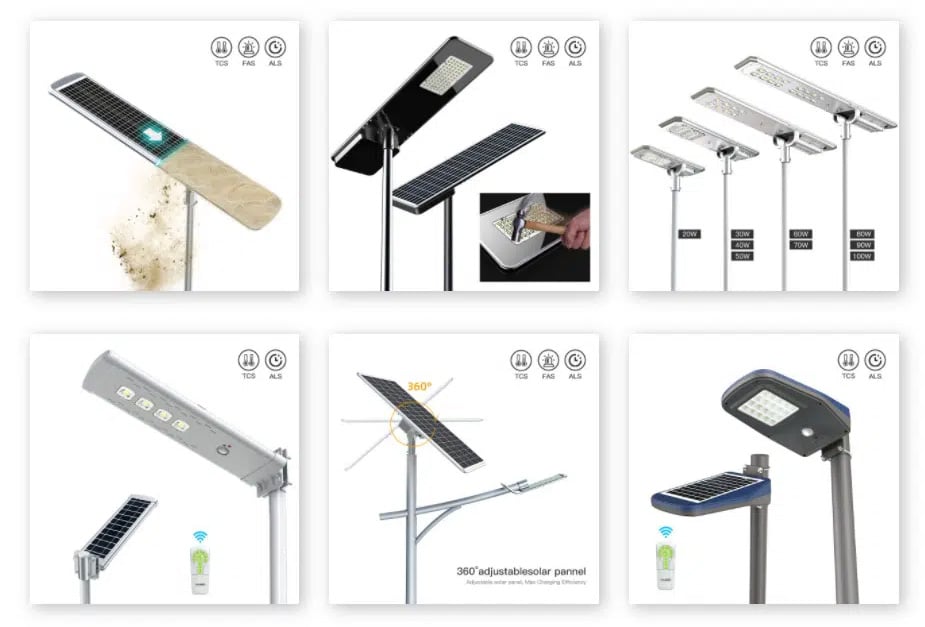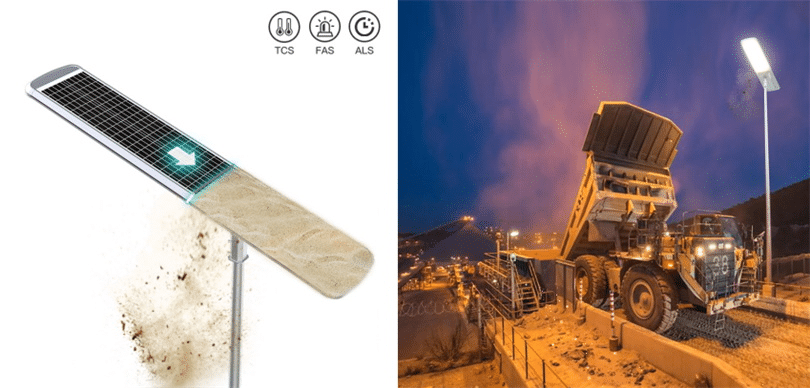Compared with conventional LED street lights, what are the advantages of smart solar street lights?
Nowadays, rural areas are vigorously installing street lights, especially solar street lights with advantages. The configuration of solar street lights in the market is actually different, and there are differences in size, so the price of solar street lights is also different, and most of them are not the same. Knowing how to choose, today I will introduce the standard configuration of solar street lights to everyone.
Smart cities have become a concept of urban development and are highly valued by governments at all levels and from all walks of life. 100% of the sub-provincial cities, 89% of the cities above the prefecture-level, and 49% of the county-level cities have begun smart city construction, and the cumulative number of prefecture-level cities involved has reached more than 300; smart city planning investment has reached 3 trillion yuan, Construction investment reached 600 billion yuan. For example, Shenzhen plans to invest 48.5 billion, Fuzhou 15.5 billion, Jinan 9.7 billion, Tibet’s Xigaze City 3.3 billion, and Yinchuan 2.1 billion.
Smart solar street lights, smart lighting, and smart cities are no longer new concepts, but with the support of policies, 5G outlets, and mature technology, smart outdoor lighting will usher in another spring of lighting. Therefore, the market layout of smart solar street lights in 2020 is bound to be a precise layout of outdoor lighting in the future.
Current status of smart street lamp technology
At present, the interconnection technologies used in smart street lights mainly include PLC, ZigBee, SigFox, LoRa, etc. These technologies cannot meet the “interconnection” needs of street lights distributed everywhere, which is one of the key reasons why smart solar street lights have not yet been deployed on a large scale.
PLC, ZigBee, SigFox, LoRa technologies need to build their own networks, involving survey, planning, transportation, installation, commissioning and optimization, etc. and need to maintain themselves after the network is built, so it is not convenient and efficient to use.
Networks deployed with technologies such as PLC, ZigBee, SigFox, LoRa, etc. have poor coverage, are susceptible to interference, and have unreliable signals, resulting in low access success rate or connection drop-outs. For example, ZigBee, SigFox, LoRa, etc. use an unlicensed spectrum. The frequency interference is large, the signal is very unreliable, and the transmission power is limited, and the coverage is also poor; and the PLC power line carrier often has more harmonics and the signal attenuates quickly, which makes the PLC signal unstable and poor reliability. Third, these technologies are either old and need to be replaced, or they are proprietary technologies with poor openness.
For example, although PLC is an earlier Internet of Things technology, there are technical bottlenecks that are difficult to breakthrough. For example, it is difficult to cross the power distribution cabinet to expand the control range of the centralized controller, so the technological evolution is also limited; ZigBee, SigFox, LoRa Most of them are private protocols, which are subject to many restrictions on standard openness; although 2G (GPRS) is a mobile communication public network, it is currently being withdrawn from the network.
Main functions of smart solar street lights
a. the integration and systemization of smart functions;
b. Intelligent control, intelligent adjustment, real-time data transmission of energy consumption;
c. Smart data collection end, hub centre, data platform;
d. the Internet of Everything;
e. safety warning + information release;
f. City traffic identification;
g. signal base station;
h. Monitoring the base station.
In other words, smart solar street lights are the largest entrance to smart cities today and in the future. Combined with the urbanization of roads and buildings, it has become the most numerous, most widely distributed, and most convenient function and collection hub.

Today’s smart solar street lights are the same as the conventional LED street lights in 2011
At that time, many traditional outdoor lighting manufacturers were watching and trying. Even many industry experts are still discussing that LED street lights are not suitable for mass applications due to production process, illuminance, etc., boosted by the characteristics of LED modules and EMC energy management, LED street lights to burst into market competitiveness. Some of today’s well-known outdoor lighting companies almost all stood out in the market competition of that year with precise positioning.
The development of new technologies pave the way for the development of smart solar street lights
and the domestic completion of 5G commercialization in 2020. smart solar street lights will become the “net celebrity star” of the market, forming a market of 100 billion yuan. Internet, cloud computing, the informatization of the Internet of Things, the basic application of data. The door to smart cities has been opened, and the introduction and support of various regional government policies have solved the market demand and the implementation of systematic integration in various fields. Light pole manufacturing, lighting technology, Internet of Things technology, communication, and display technology are effectively integrated. The overall plan is mature and accelerates the construction of smart outdoor lighting.
As mentioned above, smart outdoor lighting has become the core module of future urban construction. Therefore, the current hardware technology, software technology, supply management, and market layout of smart solar street lights have become the key cards for outdoor lighting in the next 10 years.
Table of Contents
